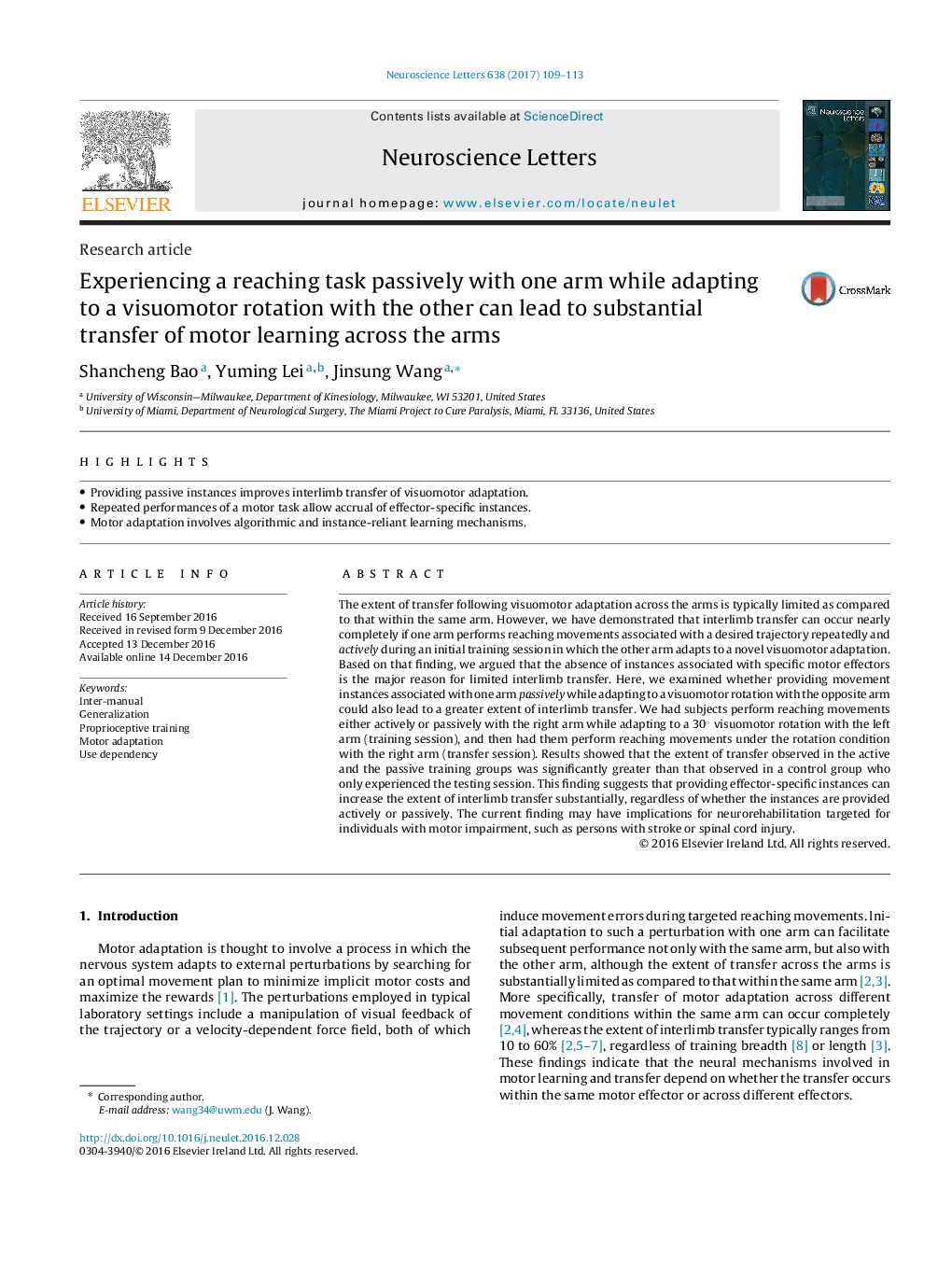| کد مقاله | کد نشریه | سال انتشار | مقاله انگلیسی | نسخه تمام متن |
|---|---|---|---|---|
| 5738856 | 1615061 | 2017 | 5 صفحه PDF | دانلود رایگان |

- Providing passive instances improves interlimb transfer of visuomotor adaptation.
- Repeated performances of a motor task allow accrual of effector-specific instances.
- Motor adaptation involves algorithmic and instance-reliant learning mechanisms.
The extent of transfer following visuomotor adaptation across the arms is typically limited as compared to that within the same arm. However, we have demonstrated that interlimb transfer can occur nearly completely if one arm performs reaching movements associated with a desired trajectory repeatedly and actively during an initial training session in which the other arm adapts to a novel visuomotor adaptation. Based on that finding, we argued that the absence of instances associated with specific motor effectors is the major reason for limited interlimb transfer. Here, we examined whether providing movement instances associated with one arm passively while adapting to a visuomotor rotation with the opposite arm could also lead to a greater extent of interlimb transfer. We had subjects perform reaching movements either actively or passively with the right arm while adapting to a 30° visuomotor rotation with the left arm (training session), and then had them perform reaching movements under the rotation condition with the right arm (transfer session). Results showed that the extent of transfer observed in the active and the passive training groups was significantly greater than that observed in a control group who only experienced the testing session. This finding suggests that providing effector-specific instances can increase the extent of interlimb transfer substantially, regardless of whether the instances are provided actively or passively. The current finding may have implications for neurorehabilitation targeted for individuals with motor impairment, such as persons with stroke or spinal cord injury.
Journal: Neuroscience Letters - Volume 638, 18 January 2017, Pages 109-113